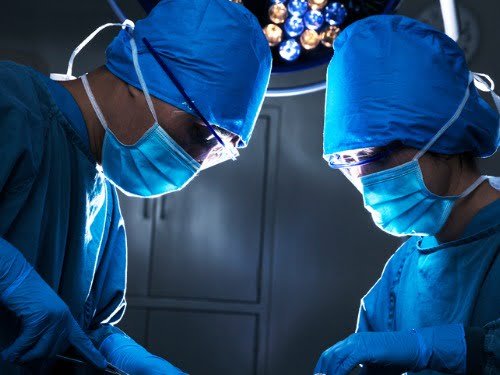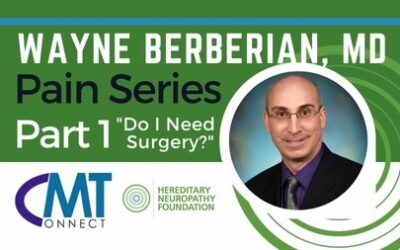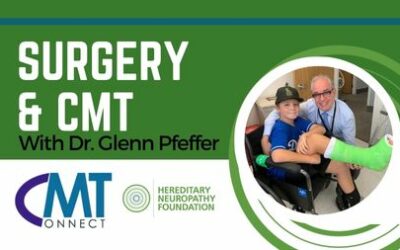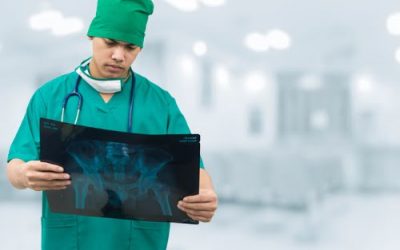Most patients who have moderate to severe CMT disease can be helped with surgery. Clawed toes can be straightened, high arched feet can be flattened, and unstable ankles can be tightened. Many patients are wary of having surgery because of misconceptions of what is involved. Historically, the only surgery that was offered to a person with CMT was a fusion of one or more joints in the foot. We have made great strides over the past decade, and now, even a fusion of one joint is rarely required. Instead, early intervention (with osteotomies to correct boney malalignment, tendon transfers to balance the foot, and ligament reconstruction to stabilize the ankle), provide marked improvement in function and often prevent further deformity.
CMT Surgery Focuses on Forefoot Deformity, Cavus Foot, Ankle Laxity, and Tendon Imbalance
In the forefoot, as the intrinsic muscles in the foot and the Tibialis Anterior muscle in the leg weaken, the toes begin to claw. The metatarsal-phalangeal joints hyperextend and the small joints of the toes flex. Metatarsalgia, pain on the ball of the foot, develops as the deformity places downward pressure on the heads of the metatarsals and the protective fat pad beneath them is pulled distally by the upturning toes. Walking becomes painful and wearing shoes becomes difficult. Cushioned orthotics, shoe modification with a rocker bottom sole and an extra-depth toe box can help alleviate early symptoms. Over time, the deformity becomes fixed and conservative treatment no longer helps. Surgery can correct the deformity and markedly diminish symptoms. We transfer the extensor tendons of the toes to the midfoot, so that their pull is no longer a deforming force and adds power to dorsiflexion of the ankle. Release of soft tissue contractures straightens the metatarsal-phalangeal joints and the toes. Three weeks postoperatively patients start their return to pain-free walking and normal shoe wear.
Correcting a High Arch
The cavus, high arched foot of CMT, causes an unstable gait, plantar foot pain and a predisposition to ankle sprains. Surgery for this problem is very rewarding in that it flattens the foot, distributes the stress more evenly across the plantar aspect of the foot, and repositions the heel beneath the weight bearing axis of the leg. Typically, the orthopaedic surgeon elevates the first metatarsal with an osteotomy at its base, divides the plantar fascia to allow the high arch to settle into a flatter position, and straightens the in-turned varus heel by removing a small pie shaped wedge laterally. If the ankle ligaments are lax, as a result of the multiple sprains and years of uneven gait, they can easily be tightened during the same surgery. The results are uniformly excellent, as patients experience a significant decrease in pain and an increase in endurance and stability of gait. A return to normal shoe wear is an additional benefit.
The Benefits of Tendon Transfers
Tendon transfers are a salient component of CMT surgery. If performed during the early phases of the disease process, progression of the deformity can often be minimized. The most typical transfer is the Peroneus Longus to the Peroneus Brevis tendon. In patients with CMT, the Longus often maintains its strength while the Brevis weakens, creating a deforming force on the medial midfoot. Transfer of the tendon to the lateral side of the foot at the Brevis insertion eradicates the deformation and increases stability during standing and gait. Even patients with a flaccid paralysis of most muscle groups in the leg can benefit from a tendon transfer. A transfer of the Posterior Tibial tendon, for example, can increase ankle strength and often negate the use of a drop foot brace.
All of these operations can be performed as an outpatient under regional anesthesia, which is preferable to most patients. They have complete pain relief for 24 – 72 hours postoperatively from the block, and easily control their residual symptoms with a combination of short- and long-acting narcotics. By three to six weeks after surgery, an over-the-counter walking shoe can be used.
Twenty years ago I operated on my first patient with CMT. She was 25 years old and had pain with every step. She used a cane. I recently received a letter from her. “My new foot felt like a miracle,” she wrote, “I was able to walk barefoot for the first time since I was 16 years old. I was no longer embarrassed to let others look at my feet and I am finally wearing normal shoes, even a small heel. Thank you for giving me back my feet.”
Glenn B. Pfeffer, MD, is an Orthopaedic Foot and Ankle specialist, Director of Cedars-Sinai CMT/Hereditary Neuropathy Center, and Past-President of the American Orthopaedic Foot and Ankle Society












Our daughter is 19 and under going all of the above surgeries. Our issue is finding a doctor to clinically diagnose Cmt. She saw neurologist and neuromuscular doctor when her feet got worse but she was very young. The physiatrist has monitored her for many years but it almost impossible to get to the neuromuscular doctor.
I’m scheduled for the tendon swap surgery next January, but my husband is concerned I will have issues healing due to lack of circulation in my feet and legs. Does anyone have any experience with this?
I am looking for a surgeon in the Madison, Wisconsin or Chicago, IL area. Any recommendations are appreciated.
After reading this article, I feel that I need this surgery on both my feet. Are there surgeons in South Australia who are known to perform this operation.
Has anyone ever had tendon transfers done on their hands or wrists? Was wondering if it could help with me severe drop wrist? I have CMT2a.
Are there any recommendations for surgeons in the D.C./Maryland/Northern Virginia area?
Hi Asya,
The following is a local recommendation from our “Docs that Rock” page submitted by CMT patients:
“Dr. Cambell is a very knowledgeable and caring surgeon. He did an amazing jog operating my CMT left foot. I’m coming back for a second surgery on my right foot next year. Excellent staff. I highly recommend his practice.”
John T. Cambell ~ Foot & Ankle Reconstruction
301 St Paul Place, Baltimore, Maryland 21202
Phone: 410-659-2800
Website: https://mdmercy.com/centers-of-excellence/orthopedics-bone-and-joint/institute-for-foot-and-ankle-reconstruction?sc_lang=en
Nominated by: Lissette MiroQuesada
Thank you very much, Lissette! We have an appointment to see Dr. Campbell in March. Would you by any chance be willing to talk to my son about your experience with the surgery? The CMT clinic at Hopkins recommended he does not consider surgery which has been his hope for improvement for a while…
Are there any surgeons you can refer me too in the Columbus Ohio market who can repair my unstable ankle?
I’m so relieved to hear that CMT disease can be corrected with cosmetic toe surgery. I think I have tendon imbalance and going to a surgeon might help fix this. Since the progression of deformity can be minimized with surgery, I’ll go to the nearest professional near me to inquire about this.
Need help in Texas
Hi I was diagnosed with CMT when I was 5. It progressively has gotten worse (of course) since I’ve gotten older. Just this past June I broke my 5th metatarsal, I’m slowly getting over it still and just sprained my ankle this last week. So I guess my question would be do the surgeries work. Because I’m sick of living life in a boot.
Who do you recommend in the Indianapolis area for CMT surgery?
Thank you!
Any doctors/ surgeons worth recommending in the UK?
I need to find somewhere I can go in the Boston/New England area that accepts my low-income MassHealth insurance for diagnosis and this kind of surgery!. I can not access the hospitals suggested here, Brigham & Women’s or Newton-Wellesley, and they won’t even accept out-of-pocket payments from MassHealth patients. I can access most other hospitals in the greater Boston area, except for Mass. General.
My feet are literally tearing themselves up inside! My arches have gone extremely high and are pulling apart the fat pad tissues under the balls of my feet, and the tendons/ligaments are pulling my toes down toward “hammertoe” position. It’s extremely painful, all the time, 24/7, eight months and getting worse!
I didn’t even get a possible diagnosis of CMT until a few weeks ago. Eight months of doctors at every hospital I could access drawing blanks on me! My late aunt, who was in California, was diagnosed with CMT, and it made her last years miserable!
Thank you, I hope someone can help me! I don’t know if I’d ever be able to afford to go to California to Cedar-Sinai!
I live in Indiana any near here I have family in San Francisco
Anyone have experience with the Hospital for Special Surgery in New York or Rothman institute in Philly? They are both about 2 hrs away and want to go to best place.